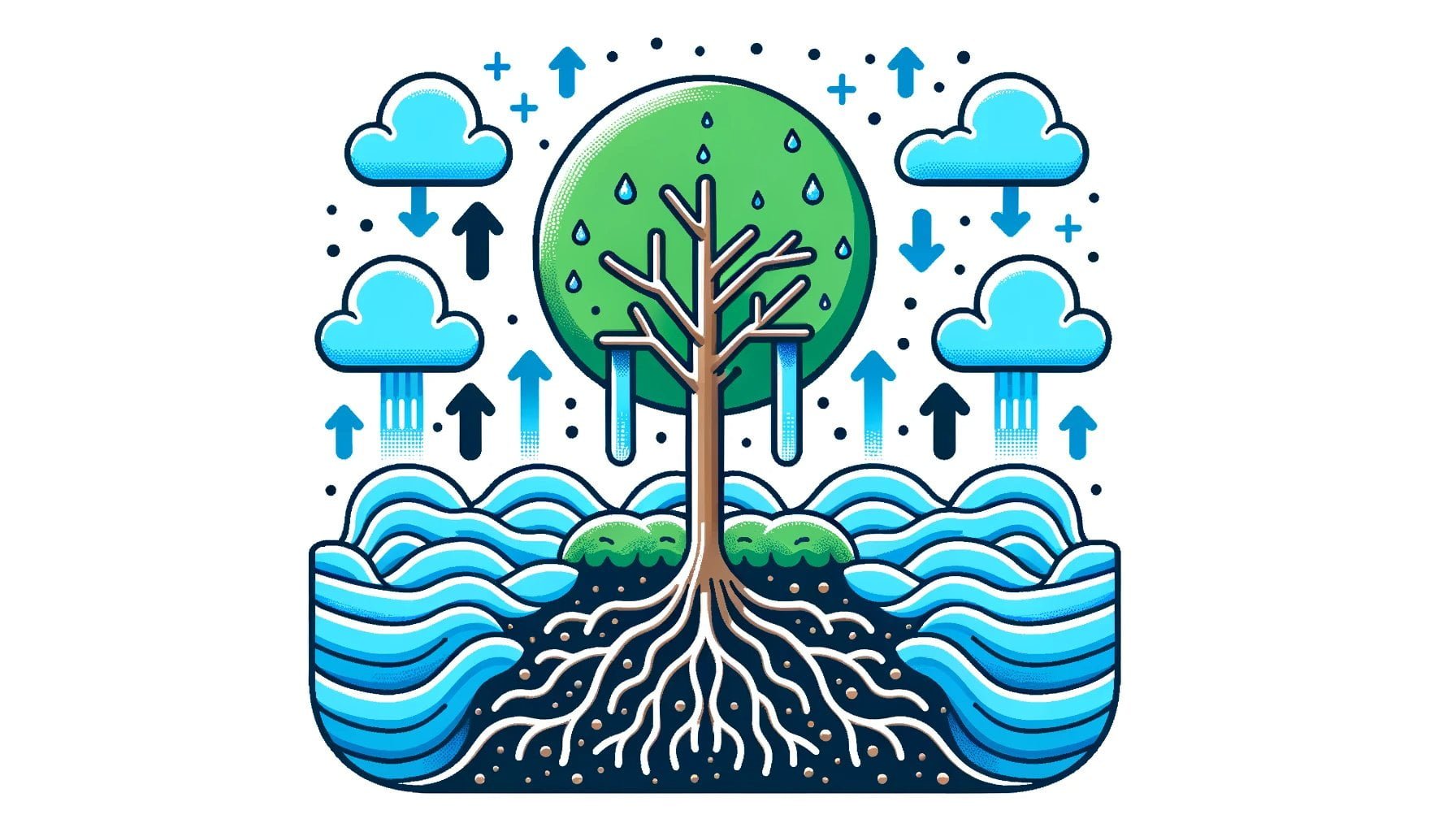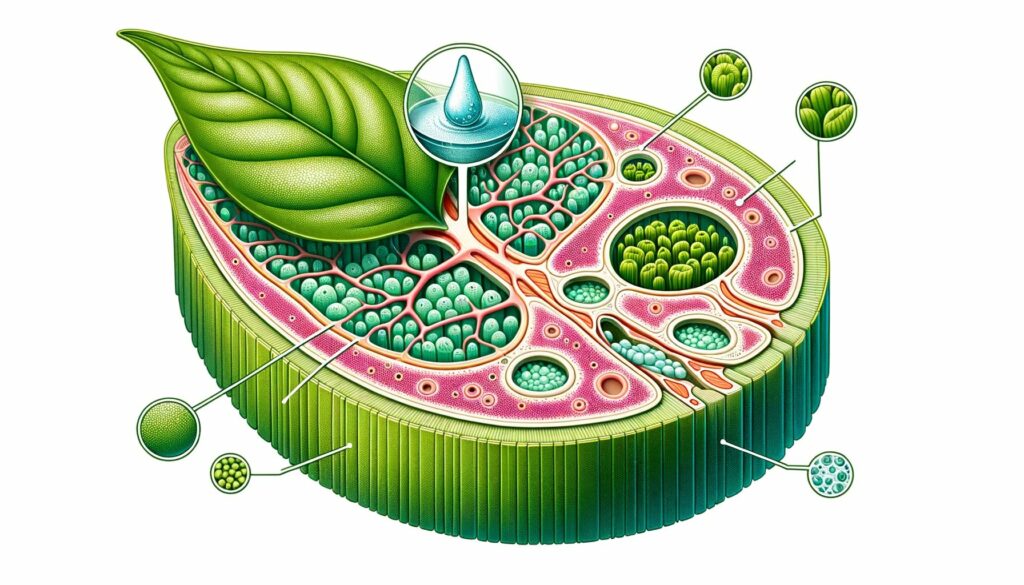Transpiration, a fundamental process in the field of plant biology, plays a crucial role in the survival and growth of plants. But how exactly does transpiration occur? In this article, we delve into the intricate mechanisms behind this essential phenomenon, shedding light on the fascinating world of plant physiology. Through a comprehensive exploration of plant-water relations and utilizing cutting-edge experimental techniques, we aim to demystify transpiration and provide a clear understanding of its mechanics. Join us on this scientific journey as we unravel the secrets of transpiration and its significance in the realm of botany.
How does transpiration occur?
Transpiration is a crucial process in plant physiology that involves the loss of water from plants through tiny openings on their leaves called stomata. Have you ever wondered how plants manage to lose water? Let’s explore the mechanics behind transpiration and unveil the intricate processes involved.
The Role of Transpiration
Plants have an incredible ability to take in more water than they need at any given time. This surplus water can create issues for the plant, such as imbalances in nutrient uptake, but transpiration helps to regulate this excess. By releasing water through the stomata, plants maintain a healthy equilibrium and prevent the buildup of potentially harmful substances.
Transpiration is also vital for plants to access carbon dioxide, a crucial ingredient for photosynthesis. Through transpiration, plants can draw in carbon dioxide from the environment, facilitating the process of converting sunlight into energy. In addition to aiding in photosynthesis, transpiration plays a role in cooling plants down, much like the way sweating cools us down.
Different Forms of Transpiration
Transpiration occurs through two main processes: stomatal and lenticular transpiration. Stomatal transpiration accounts for the majority of water loss from a plant and takes place through the stomata on the leaf surface. On the other hand, lenticular transpiration occurs through specialized structures called lenticels, which are found on the stems of some plants.
Factors Affecting Transpiration
Various factors influence the rate of transpiration in plants. Temperature, humidity, wind, and light intensity all play significant roles in regulating transpiration. Higher temperatures generally result in increased transpiration rates, while high humidity can reduce transpiration. Wind can promote transpiration by creating air movement around the leaves, thus facilitating the evaporation of water. Light intensity also affects transpiration, with higher levels typically resulting in increased rates.
Measuring Transpiration
Transpiration can be measured using various techniques. Gravimetric analysis involves weighing a plant before and after a period of time to determine the amount of water lost. Another method involves using porometers, which measure the rate at which water vapor escapes from the leaf surface.
Importance of Transpiration for Plants
Transpiration plays a vital role in plant growth and survival. It enables the transportation of nutrients from the roots to the different parts of the plant, ensuring healthy development. Transpiration also helps plants cool themselves down, preventing heat-related damage. Additionally, transpiration assists in maintaining water balance within the plant, preventing water stress. However, excessive transpiration can lead to water stress and increase the plant’s susceptibility to drought.
In summary, transpiration is a fascinating and essential process in plant physiology. It allows plants to regulate water intake, access carbon dioxide for photosynthesis, and maintain temperature balance. By understanding the mechanics of transpiration, we gain insights into the intricate processes that ensure the survival and growth of plants in their diverse environments.
Experience the wonders of the water cycle by exploring the intricate process of transpiration. By clicking here, you will unravel the mysteries of how water is constantly being cycled through plants and the environment. Gain a new appreciation for the interconnectedness of nature, as you discover the vital role transpiration plays in maintaining the delicate equilibrium of our planet’s ecosystems.
Factors Influencing Transpiration
Transpiration, the loss of water vapor through plant stomata, is a vital process in plant biology. It plays a crucial role in maintaining plants’ water balance, facilitating the movement of nutrients, and regulating temperature. Understanding the factors that influence transpiration is essential for comprehending the mechanics behind this phenomenon. In this article, we will explore the key factors that influence transpiration rates and their impact on plants.
Temperature: The Heat Factor
One of the primary factors influencing transpiration is temperature. As temperatures rise, so does the rate of evaporation from leaves. This increase in evaporation accelerates transpiration. The process can be likened to drying clothes on a hot summer day—the higher the temperature, the faster the clothes dry. Similarly, in plants, high temperatures lead to faster evaporation of water from leaves, resulting in an increased rate of transpiration.
Wind: The Invisible Force
The second influential factor is wind. Wind can blow away water vapor from the surface of leaves, speeding up transpiration. Picture a fan blowing across wet clothes. The moving air carries away the moisture, causing the clothes to dry more rapidly. In the same way, when wind blows over leaves, it carries away the water vapor, increasing the rate of transpiration.
Humidity: The Moisture Counterpart
Humidity, or the amount of moisture present in the air, also affects transpiration. Inversely proportional to relative humidity, transpiration decreases as humidity levels rise. Consider a rainy day compared to a hot, dry day. On the rainy day, the air is already saturated with moisture, leading to lower transpiration rates. Conversely, on a scorching day, with low humidity, transpiration rates are higher since the air has less moisture to begin with.
Environmental Factors: A Multifaceted Influence
Apart from temperature, wind, and humidity, several other environmental factors can impact transpiration rates. These factors include light intensity, the size of leaves, and even the plant’s overall water availability. Each of these elements can significantly affect the rate at which plants transpire.
Light Intensity: Illuminating Transpiration
Light intensity plays a critical role in transpiration. When light intensity increases, the stomata on leaves open wider to allow carbon dioxide entry for photosynthesis. However, when the stomata open wider, more water vapor is lost through transpiration. So, higher light intensity translates to a higher rate of transpiration.
Leaf Size: A Matter of Surface Area
The size of leaves also influences transpiration rates. Larger leaves have a greater surface area available for evaporation, resulting in increased transpiration. Similarly, plants with more leaves will have a higher combined surface area, increasing the overall rate of transpiration.
Water Availability: The Balance
Water availability to the plant is significant. Plants need water to maintain turgidity, facilitate the movement of nutrients, and perform various vital functions. However, when water becomes scarce, plants may transpire excessively, leading to water stress and potentially damaging the plant.
In summary, transpiration, the loss of water vapor through plant stomata, is influenced by several key factors. Temperature, wind, humidity, light intensity, leaf size, and water availability all play a role in regulating transpiration rates. Understanding these factors is crucial for comprehending the mechanics of transpiration and its impact on plant physiology. By unraveling the intricate relationship between plants and their environment, we gain a deeper appreciation for the wonders of nature around us.
Note: The table below summarizes the factors influencing transpiration rates.
| Factors Influencing Transpiration | Influence on Transpiration Rates |
|---|---|
| Temperature | Increases transpiration rates with higher temperatures |
| Wind | Enhances transpiration rates by blowing away water vapor |
| Humidity | Decreases transpiration rates as humidity levels increase |
| Light Intensity | Increases transpiration rates by widening stomata openings |
| Leaf Size | Larger leaves and more leaves lead to higher transpiration rates |
| Water Availability | Excessive transpiration due to water scarcity can harm plants |
Significance of Transpiration in Plants
Transpiration holds immense significance in the life of plants, making it a crucial process within the realm of plant biology. This article aims to shed light on the importance of transpiration and how it influences various aspects of plant physiology.
Maintaining Moisture Conditions in the Environment
Transpiration plays a pivotal role in maintaining moisture conditions within the environment surrounding plants. As water evaporates from the stomata – the small openings on the leaf surface – it creates a pull or vacuum inside the plant’s vessels that transport water. This pull, known as the transpiration pull, helps in drawing water up from the roots. Through this process, plants ensure an adequate supply of water for their growth and survival.
Accessing Carbon Dioxide for Photosynthesis
Another significant aspect of transpiration is its role in facilitating photosynthesis, the process through which plants convert sunlight, water, and carbon dioxide into energy. During transpiration, as water vapor escapes from the stomata, it creates a suction that pulls in carbon dioxide from the atmosphere. This influx of carbon dioxide is essential for photosynthesis to occur effectively. Thus, transpiration enables plants to access the carbon dioxide required for their energy production and growth.
Temperature Regulation: Cooling Plants Down
Transpiration is also crucial for the temperature regulation of plants. Similar to how perspiration cools down humans, transpiration helps in cooling plant tissues. As water evaporates from the leaf surface, heat energy is lost, effectively lowering the plant’s temperature. This cooling mechanism prevents plants from overheating, especially during periods of high temperature or intense sunlight. By maintaining appropriate temperatures, transpiration ensures optimal conditions for plant growth and survival.
Nutrient Transportation
Transpiration isn’t solely limited to water movement; it also aids in nutrient transportation within plants. As water evaporates from the leaves, it creates a pull that draws nutrients from the roots and transports them to various parts of the plant. Nutrients such as minerals and sugars dissolved in water are carried along with the transpiration stream, ensuring their distribution throughout the plant. Consequently, transpiration plays a vital role in delivering essential nutrients necessary for the plant’s overall development.
Water Balance Maintenance
Regulating water balance is paramount for plants, and transpiration plays a significant role in achieving this delicate equilibrium. Through transpiration, excess water absorbed by the roots can be eliminated, preventing waterlogging or overly saturated conditions. This process helps plants maintain an appropriate water balance, which is essential for their physiological functions, including nutrient uptake, photosynthesis, and growth.
With the significance of transpiration in plants well-established, understanding its mechanisms and factors that influence it becomes crucial for researchers, botanists, and enthusiasts alike. By gaining insights into the intricate processes of transpiration, we can unlock a deeper understanding of plant physiology and make informed decisions regarding cultivation, irrigation, and climate adaptation.
In conclusion, transpiration emerges as a fascinating process with profound implications for plant growth, survival, and overall ecosystem dynamics. Its roles in maintaining moisture conditions, aiding photosynthesis, regulating temperature, facilitating nutrient transportation, and balancing water are undeniable. Exploring and comprehending the significance of transpiration leads us closer to unlocking the true marvels of plant physiology and fostering sustainable practices within the field of botany.
FAQ
How does transpiration occur?
Transpiration occurs through the process of water loss from plants, primarily through stomata on the surface of leaves. Stomata are small openings that allow gases, including water vapor, to enter and exit the plant. When the plant takes in more water than it needs, excess water is released through transpiration. This process helps plants get rid of excess water, access carbon dioxide for photosynthesis, cool themselves, and maintain water balance.
What are the main types of transpiration?
There are two main types of transpiration: stomatal transpiration and lenticular transpiration. Stomatal transpiration involves the evaporation of water from a plant’s stomata, which account for most of the water transpired from a plant. Lenticular transpiration, on the other hand, involves the evaporation of water from the lenticels of a plant.
What factors affect transpiration?
Several factors can affect the rate of transpiration in plants. Temperature plays a significant role, as high temperatures lead to faster evaporation of water from leaves, increasing the rate of transpiration. Wind also affects transpiration by blowing away water vapors from the surface of leaves, enhancing transpiration. Additionally, humidity is inversely proportional to transpiration, meaning that transpiration decreases as humidity levels increase. Light intensity can also impact transpiration rates.
Why is transpiration important for plants?
Transpiration is essential for plant growth and survival for several reasons. It enables the transport of nutrients throughout the plant, cools plants by releasing water vapor, and helps maintain water balance within the plant. Additionally, transpiration allows plants to access the carbon dioxide needed for photosynthesis. However, excessive transpiration can lead to water stress and drought susceptibility in plants.
How can transpiration be measured?
Transpiration can be measured through various techniques. Gravimetric analysis involves weighing a plant before and after a specific period to measure the water loss through transpiration. Porometers, on the other hand, measure the rate of water vapor diffusion from the leaf surface. These techniques provide insights into the amount of water transpired by a plant and the factors affecting transpiration rates.
- Amazing March Fun Facts: Unveiling History & Celebrations - April 15, 2025
- Master how to write height: A complete guide - April 15, 2025
- How High Are Your Standards Test: Find Your Perfect Match Now - April 15, 2025



















